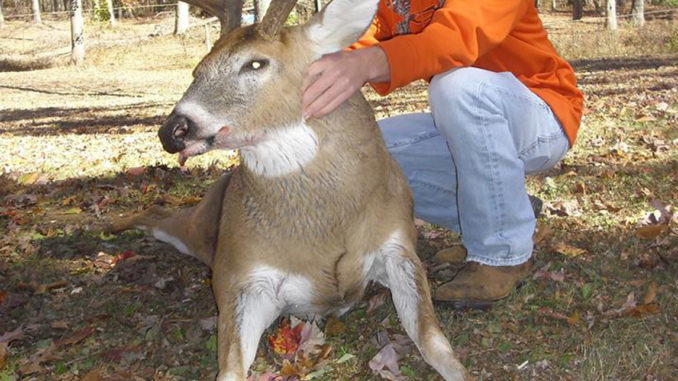
With record-book deer showing up every season, Rockingham County is drawing notice.
Where did all these big bucks come from?
You’ll have to understand if deer hunters have asked that question about Rockingham County over the past few years. The largely rural county, which rests between Stokes and Caswell counties along the North Carolina-Virginia border, has gone from just a notch in North Carolina’s northern Piedmont “trophy belt” to the shining, gold buckle.
In each of the past three seasons, Rockingham County has produced a Boone & Crockett Club buck, and of the 29 North Carolina whitetails that have made that storied record book, six grew up in the 572 square miles surrounding Reidsville, Eden, Madison and Wentworth. Two of North Carolina’s state-record bucks came from Rockingham County. At last spring’s Dixie Deer Classic in Raleigh, seven of the 35 biggest typical bucks scored were from Rockingham County, and eight bucks that scored better than 140 inches from Rockingham were measured — the biggest total of any county by a long shot.
What in the world has happened?
Hunters from Rockingham County have opinions that touch on a number of issues, but clearly, it’s hard to pinpoint any one factor. Jason Allen, a wildlife biologist for the N.C. Wildlife Resources Commission whose territory includes Rockingham and most of the northern Piedmont “trophy belt” counties, said things are all in place for hunters to kill trophy bucks there — but no more so than in neighboring counties.
“You can’t point your finger at one thing and say Rockingham has it and the rest of the state needs to have it,” Allen said. “It’s probably a combination of things. I don’t think it’s just Rockingham that has the potential for big bucks like that; it’s pretty much everywhere in the state. You have to have some old deer to have some of that quality.”
In 2011, Ron Collins killed a typical buck that scored 1705/8 and made the Boone & Crockett Club’s all-time record book. In 2012, Billy Rogers killed a deer that is No. 4 all-time among North Carolina typicals, a 176 4/8-inch monster that was scored at the 2014 Dixie Deer Classic. In 2013, John Tuttle killed a 171 7/8-inch typical that is the biggest buck ever killed in North Carolina by a bowhunter and the second bow-killed deer to make Boone & Crockett.
Jonathan Reaser’s 208 5/8-inch non-typical, taken in 2006, is No. 3 all-time in North Carolina among non-typicals; Walter Martin’s 196 6/8-inch non-typical is the second-largest ever to show up at the Dixie Deer Classic in the “non-hunting” category, and Lindsey Watkins’ 170 5/8-inch typical buck, taken in 1987, reigns as the state’s biggest buck ever taken with a muzzleloader.
One factor stands out in any discussion of Rockingham County becoming North Carolina’s top trophy county, and that’s the trend toward more and more hunters passing up small bucks. In the case of Rockingham County and almost every county to its west, a regulation change forced hunters’ hands back in 2000. That’s the year that the annual buck limit in the western half of North Carolina dropped from four to two.
In 1999-2000, Rockingham County hunters reported killing 1,609 deer. The harvest in 2000-2001 dropped to 1,447 before beginning a slow, steady rise to the 3,567 deer taken in 2012-2013. During that time, however, the percentage of antlered bucks in the harvest fell from 58 percent to 39 percent.
Fred Cox of Grand Slam Turkey calls in Reidsville, a veteran deer hunter, believes that more hunters letting smaller bucks walk in Rockingham County — either because they have only two tags to fill or because they’re no longer interested in taking spikes and forkhorns — is a big reason for the number of trophy bucks being taken.
“The only thing I can think of is that people are becoming more aware and are letting smaller bucks walk,” Cox said. “I can’t put a finger on any one thing. This is not a dog-hunting area, and that’s a good thing — not to say you can’t kill a trophy buck in front of dogs, but it helps. And we’re in a 2-buck area, and that makes a big difference.”
Cox did believe that a short-term bump in the number of big bucks being taken may have had something to do with a major highway project — the widening of US 311 from three lanes to four over a 7-mile stretch in southeastern Stokes County and western Rockingham County.
“You’ve got that big highway project going through there, and there’s been a lot of timber cut. Maybe that’s moved some deer out of Stokes County into Rockingham?” he said.
Tuttle, who tagged the state-record archery buck, thinks last year’s explosion of big Rockingham County bucks might have been related to the mast crop.
“We had two years of great acorns, and then (last fall) we had no acorns at all, and the deer really came out of the woods,” he said. “I feel like that made a big difference — that and people are not killing smaller bucks as much.”
Tuttle had two more ideas about why his home county is spitting out so many big bucks, one related to habitat and another to predation.
“There isn’t anywhere you can go in Rockingham County where there isn’t a cutover,” he said. “You drive 5 miles around any road, and you’ll see a cutover. There have been a lot of big stands that have been timbered.
“Also, I’ve always been sort of a doe hunter, and there are very few does around compared to what we used to see,” he said. “I think the coyotes have killed so many deer that the big bucks might be having to travel more to find does during the rut.”
Allen, however, comes back to the single, most-important factor in growing big bucks: letting little bucks live.
“Bucks don’t have big racks at 2 ½ (years old), and at 3 ½, a lot of them have the potential to grow a trophy rack; they’re starting to sprout pretty good horns,” he said. “But there’s not a lot of hunters who will pass up a 3 ½-year-old buck. You can kill some nice deer that way, but not those big, old, heavy horned bucks. They’ve got to be older.
“There is good habitat in Rockingham County, not to say that it’s any better than anywhere else in the northern Piedmont, like Caswell or northern Alamance; it’s just not that different.”
Allen credits hunters being more educated and having more educational materials at their fingertips.
“The whole deer-hunting culture has changed,” he said. “People are hunting more for big deer now. People are reading everything out there they can look at, and they’re learning that to grow big bucks, they have to pass up smaller deer and let them walk.
“It may be just a cyclical thing; maybe it’s a combination of things like the 2-buck rule and more people letting small bucks walk, and it may be just how hot that particular doe was to make that one real, big buck let his guard down.”

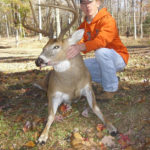
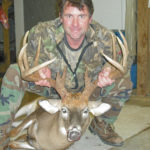
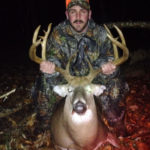
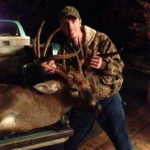
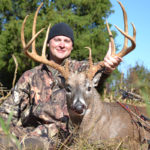
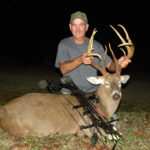
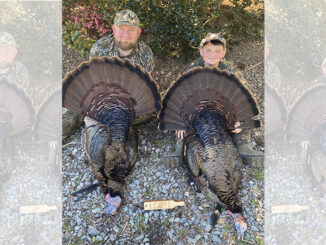



Be the first to comment